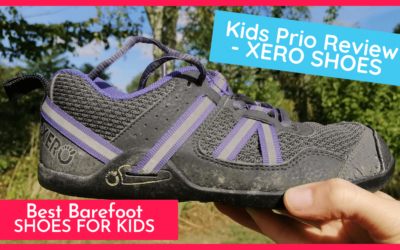Low-impact workouts are great for everyone – those with a regular exercise program and those just looking to get started. You may be surprised to learn that a “low-impact” workout does not mean low in value or potential for results! If you want to try something new or require a form of easy exercise on the joints, low-impact workouts might be exactly what you need to achieve your fitness goals.
(This post includes affiliate links for which I may earn a commission at no extra cost to you should you make a purchase)
What is a Low-Impact Workout?
When discussing low-impact training, we refer to gentle activities on the joints that involve fluid-like motions. You can choose from many types of exercise, including low-impact cardio workouts like walking, cycling, and swimming, or resistance exercise such as weight training.
According to Livefit.com, “impact” refers to the action of one object coming into contact with another. In the case of low-impact workouts, we’re referring to the contact of the body with another surface. High-impact workouts (those containing high-impact exercises) involve harder and more frequent contact with the floor, equipment, etc., whereas low-impact workouts do so in a much gentler way.
In some instances (although not always), low-impact workouts could yield slower results. However, they are easier on the body than workouts involving high-impact exercises and are instrumental when starting a healthy lifestyle. As we’ll see later, the amount of effort exerted can significantly affect the level of intensity of even the gentlest “low-impact” workouts.

Common Misconceptions of Low-Impact Workouts
Low-impact workouts are not “easy” workouts. Any time we exercise, elevate our heart rate, and build strength and endurance, it’s a good thing! Remember, “impact” refers to the action of two objects colliding (your feet and the floor, for example), not the level of intensity.
Low-impact workouts can still be high-intensity workouts, so ensure you don’t confuse impact with intensity. For example, you could still do high-intensity interval training (HIIT) as a low-impact workout. Additionally, lifting heavy weights can also be a low-impact activity.
Don’t think of low-impact workouts as a form of exercise for senior citizens or people who are out of shape. That’s just simply not the case. And by the way, many seniors at my gym have incredible strength and endurance!
As you’ll see, many of the activities listed below can be very strenuous and will improve your cardio fitness, stamina, and overall strength. Low-impact workouts are not less effective than high-impact activities – they are just different.
11 Low-Impact Workout Ideas
Now that you know what a low-impact workout is (and is not), let’s move on to some ideas for specific forms of exercise to get you moving!
1. Walking
Walking is a wonderful way to get regular low-impact aerobic exercise. It’s a very popular type of workout because it’s free, can be done anywhere, and is suitable for all fitness levels. Walking at least 30 minutes a day, five days a week, can reduce your risk for coronary heart disease by about 19 percent.
For a more intense cardio workout while walking, try increasing your speed, varying the terrain, or upping your distance goal.
To step things up a notch while keeping them low-impact, try rucking. You don’t need any special equipment to get started, and it can be done in any environment.

2. Strength Training
Strength training offers numerous health benefits, such as increasing muscle mass, keeping bones strong, improving body composition, reducing injury risk, and assisting with better blood sugar control. It can be incorporated into your routine in countless ways, ensuring variety and adaptability to your needs.
Options range from bodyweight exercises and resistance band training to the use of equipment like kettlebells, dumbbells, and suspension training systems. Each method provides unique advantages, allowing you to build a robust and functional body safely and effectively. Remember to prioritize safety and progression as you explore these diverse strength training techniques.

3. Cycling
Cycling is a fantastic workout! As any cyclist will tell you, it is anything but “lazy.” Cycling improves cardiovascular health and strengthens your lower body and core muscles when done correctly.
Cycling can be done indoors or outdoors. If riding outdoors, you must consider additional factors such as weather, conditions, and traffic. I recommend starting indoors on a stationary bike if you’re new to cycling. Indoor cycling classes are a fun way to get in a great sweat session without worrying about oncoming vehicles.

4. Swimming
Swimming is a unique low-impact exercise because it is virtually a no-impact sport, making it an excellent option if you experience lower-body joint pain.
Exercising in the water is a great way to get a full-body workout while being extremely easy on your joints. Swimming has cardiovascular benefits, is great for your muscles, and it’s also fun! You are much more likely to stick with a fitness routine if you genuinely enjoy what you’re doing.

5. Elliptical training
The elliptical machine is one of my favorite low-impact aerobic activities. It’s a popular piece of gym equipment for public and private use, and for good reason! Elliptical trainers can help you blast away calories while providing a great upper body workout (those moving handles aren’t just to hold on to). By pushing and pulling (or pumping) the handles along with the speed of your legs, you get a complete total body workout and cardio session.

6. Yoga
If you think yoga is just prolonged stretching, think again! While yoga does not have the same aerobic intensity as other exercises, it can definitely make you break a sweat. Not only is yoga a great low-impact physical activity, but it can also help you increase flexibility and body strength, reduce stress and anxiety, improve posture, and aid in sleep habits.
[Elly: For some specific yoga workouts, try these yoga poses for tension headaches, or these yoga poses for back pain].

7. Pilates
Like yoga, pilates is not an intense cardiovascular workout (though you will break a sweat!). Still, it improves flexibility, increases muscle strength and tone, and gives you better muscular control and balance.
Pilates would be a great addition to any low-impact training routine. It is known for creating long muscles and a strong core, helping you look and feel leaner.

8. Dancing
Dancing is a beautiful way to get a full-body workout while having fun! According to WebMD, a 30-minute dance class burns between 130 and 250 calories – about the same as jogging!
Other benefits of dancing include improved flexibility and increased strength, which can be done anywhere without any equipment.
When choosing a low-impact dancing workout, remember to select a dance that is easy on the joints and does not involve much stomping or jumping. Tap dancing, for example, would probably not be as low-impact as Zumba or other similar activities.

9. Water aerobics
Water aerobics classes offer a splash of fun while providing a fantastic way to boost your cardiovascular fitness. These classes, often set to upbeat music, transform a typical workout into a lively, engaging experience.
The buoyancy of water supports your body, reducing the impact on joints and making movements feel easier and more fluid. This makes water aerobics a highly accessible option for people of all fitness levels, especially those with joint concerns or recovering from injuries.
Whether you’re a non-swimmer or a seasoned water enthusiast, diving into a water aerobics class can be a refreshing approach to achieving your fitness goals while keeping your joints happy and healthy.

10. Rowing machines
Women’s Health has dubbed rowing a “cardio dream.” Because you’re using every inch of your body to row, it’s a good way to get in a full-body workout and have high intensity without injury. Some even say that the repetitive motion provides a calming, meditative effect on one’s mind.
Rowing at 80% of your maximum intensity for only 15 minutes is a great way to burn fat. For a more intense workout, rowing can be done in a Tabata style where you would work at 100% for 20 seconds, taking 10 seconds of rest before repeating the cycle for 15 minutes.

11. Jumping Rope
Seeing jump rope on this list of low-impact cardio exercises may surprise you. It deserves a spot because proper jump rope form involves landing gently on the balls of the feet, which you can control to cushion your landing.
Jumping rope can burn 200 to 300 calories in 15 minutes. It also improves coordination, heart health, and stamina. It’s an easy way to do a low-impact exercise at home with minimal equipment.
[Elly: Note that jumping rope may involve a little too much impact for some people. Therefore, be sure that you’ve been regularly doing low-impact workouts, such as the others listed above, before trying skipping. If and when you’re ready, check out these great jump rope workout ideas].

Frequently Asked Questions about Low-Impact Workouts
Low-impact exercise is an excellent option for virtually everyone. It provides the same benefits as other activities, such as increased strength, cardiovascular health, and improved endurance and stamina, all with less risk of injury.
Low-impact exercises are easy on the joints and incorporate fluid-like motions. This makes them ideal, especially for those at higher risk of injury, recovering from an injury, or looking for a new fitness routine.
You can absolutely achieve weight loss through low-impact training. In the beginning, you may need to exercise for a longer period to burn the same amount of calories as other activities. But as your fitness level increases, you can do more intense, low-impact exercises.
Always consult your physician or a licensed professional before beginning any new workout regimen, but generally speaking, yes. According to the CDC, adults over 18 should get at least 150 minutes of exercise each week (moderate intensity) or 75 minutes with vigorous intensity.
Don’t forget to take time to rest as well, especially when participating in higher-intensity exercises. Rest and recuperation are crucial for overall health and may help prevent overuse injuries.
In addition to our abovementioned list, you can find many circuit-training low-impact workouts online. If that interests you, start with these simple 6 low–impact cardio exercises compiled by ACE-certified personal trainer Nicole Davis.
[Elly: You can also try these low-impact bodyweight resistance exercises. You don’t need any equipment, and there are three different level options. Therefore, you can choose the one that’s right for you].
Simply stated, weight loss occurs when the number of calories consumed is less than the number of calories used (or burned). That said, walking is a straightforward yet effective way to burn calories. Brisk walking can burn up to 150 calories in 30 minutes, and depending on your pace and incline, you can burn more.
[Elly: If you’re not losing weight gradually by creating a small calorie deficit, other factors are likely at play. Hormones are a huge one, as they affect the general balance and homeostasis of the body. Hormone imbalances can cause you to store extra body fat in the instances you would be expecting to lose it].
Final Tips on Low-Impact Workouts for Beginners
Depending on your needs and goals, a mixture of high and low-impact exercises can play important roles in improving overall fitness.
Discover more incredible low-impact exercises in this Ultimate Guide to using Resistance Bands, this article about resistance bands versus dumbbells, and these posts about TRX chest exercises and TRX back exercises. You may also want to know whether your workout routine is helping you to be functionally fit.
Remember, a low-impact exercise routine does not have to mean a low-intensity exercise routine. “Low impact” refers to activities that contain fluid-like motions and are easy on the joints, with no abrupt collision. The best advice I can give is to find an activity that you love. When you genuinely enjoy exercise, it becomes something that you crave and look forward to!
Disclaimer: This article contains affiliate links. This means that if you make a purchase after clicking on one of these recommended service provider links, like an insurance broker, or a travel agent, I may earn a commission – at no extra cost to you. [For my full disclosure, please see my DISCLAIMER page].





Hi
I have gone through this article. It is such a nice article.
Thank you for sharing this with us.
You’re welcome, and I’m glad your enjoyed it:-)